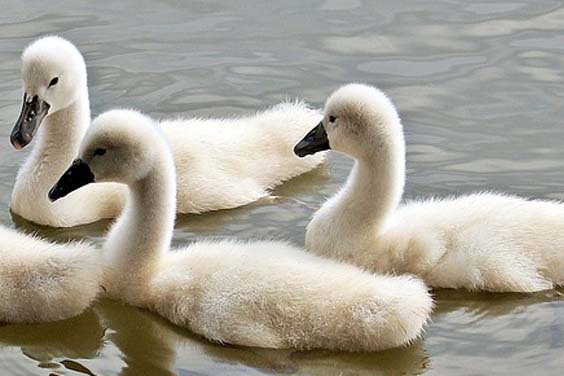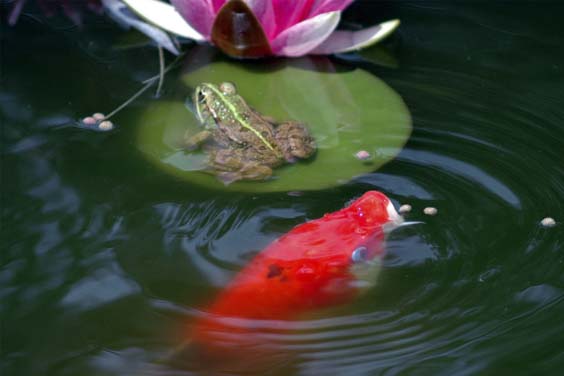
Source: Pixabay
Ponds require filtration for them to be clean and safe for fish and other water animals, and since they don’t have inlets and outlets like other water sources like rivers and lakes, they require an artificial filtration system. There are countless types of pond filtration systems and equipment that you can use depending on what you need, the size of the pond, and your purchasing power. The following are the most notable types of pond filtration.
Biological filtration is the use of biological agents in cleaning the pond off toxic microorganisms that would otherwise cause health issues for the fish on top of discoloring the water. The process involves the installation of pond media filters like ceramic ring filter media, pond filter sponges, filter balls, among many other filtration media materials that act as bacteria house media.
Once these beneficial bacteria multiply around the pool, they get down to the business of absorbing ammonia and converting nitrites into nitrates, which is basically a less dangerous form of the toxins. For the best results, the biological filtration agents are usually placed in another chamber where water from the pond is allowed to pass through slowly many times over until most of the toxic materials are expunged from the water. The process is continuous and doesn’t have to stop, which ensures the pond water never accumulates dirt to unmanageable levels.
When it comes to cleaning the sponge filter setup, make sure you do it the right away to avoid destroying the beneficial bacteria in the process since the time it takes for them to grow again is quite long.
Mechanical filtration is a broad pond water filtration system word that encompasses all the manual process of getting dirt from the pond using different tools and equipment. Some of these include filter socks, sponge filters, floss pads, brushes, basically anything you can use to pick visible debris from the water selectively. It is the most energy-consuming type of filtration that also consumes a lot of power when you have to use advanced systems like pressure filters and the likes.
The working principle is simple, water from the pond is forced through a filter sponge or a net, and while the water passes through easily, anything bigger than a grain of sand gets left behind, trapped by the sponge or any material you may choose to go with. This is done several times until all the debris is cleared from the water. The water is usually pumped with enough pressure to push it up the filtration tanks.
Other variations of mechanical filtration systems include the waterfall filters, which take advantage of gravity to clean the pond water when placed at an elevated position above the pond. It is one of the best examples of non-pressurized filtration setups
This is the most sophisticated and costly pond filtration system. Rather than use chemicals that may harm the fish and other animals in the process, this system cleans the water through the use of UltraViolet sterilizers. This works by targeting the strong UV rays on floating organic particles like fungi, viruses, bacteria, and algae, which may cause health problems for the fish. A UV light sterilizer is placed inside the water, and once it is switched on, it starts blasting all these tiny microorganisms, which get destroyed in the process. One of the biggest advantages of a pond UV light sterilizer is that it doesn’t require too much work, and it is harmless to the fish.
The drawbacks, however, is that they are expensive to set up, consume a lot of power, and they have a limited lifespan. Most standard ones have a capped limit of 8,000 hours. Once they hit that, you’ll be forced to replace them.
Chemical filtration also involves the use of activated carbon to absorb toxic substances like methane and ammonia from the water by placing an activated carbon sponge filter inside the water. It is a harmless and efficient method of filtration and can stay active for a very long time before you start thinking of replacements.
This is a recent filtration method that has just been developed to aid pond owners in cleaning their backyard ponds. It works by passing controlled low-voltage electric currents into copper anodes placed in the water. These currents cause the anodes to release charged atoms into the water, are which then disintegrate any algae, fungi, and viruses in the water, safely prohibiting their growth and spread.
This filtration medium is more convenient than most of the other processes as it doesn’t require constant attention at all times. It is also safe for the fish since the voltage released is too minimal to hurt them, let alone getting detected. However, you’ll have to contend with huge electric bills and the need to have an expert come over in case of any problem since it is a sophisticated system that is still getting improved.

Source: Pixabay
Pond filtration is necessary if you ever plan to own a pond that will house animals in it. Unless the pond in question has an inlet and an outlet, then another way of ensuring the eater stays clean will be needed. Some of the reasons why having a pond is vital include the following.
It makes the water habitable for the fish. It gets rid of harmful pond algae and viruses that would cause diseases for the fish. It also makes the water crystal clear for increased visibility. All these are factors that are necessary for the fish and other animals to survive, otherwise, it would be better if they are left in their natural habitats if a pond can’t meet even the basic standards required.
Filtration aids in the percolation of oxygen in the water. When you use air pumps and water pumps, the churning of the water that happens makes more oxygen to be absorbed into the water, and this is what will keep the fish thriving in the pond.
Filtration creates an ecosystem. When the pond is clean, more animals are attracted to it, and this creates a thriving mix of life, which is good for the surrounding environment. Clear waters will even attract beautiful birds, and within no time, your backyard will start looking like a scene from a game sanctuary.
It gets rid of the trash. Ponds are open spaces, and there’s not much you can do to prevent foreign materials from falling inside. Falling debris like leaves is not a good look on the pond, and you can use tools like a pond skimmer to get rid of the trash keeping the water clear and lean for the animals in them.
You cannot have a pond without garden pond filter systems, unless you plan to simply have a plant pond without any fish in them, but that still will require some form of cleaning to avoid ending up with foul-smelling brackish water. It costs to have a good looking clean pond in your backyard; you’ll have to go well out of your way to ensure it is habitable for all kinds of animals that will turn the pond into their home. For more information on the best pond filtration system or if you have questions and concerns that need to be addressed, feel free to contact us, and our team of experts will help you.




Leave a Reply